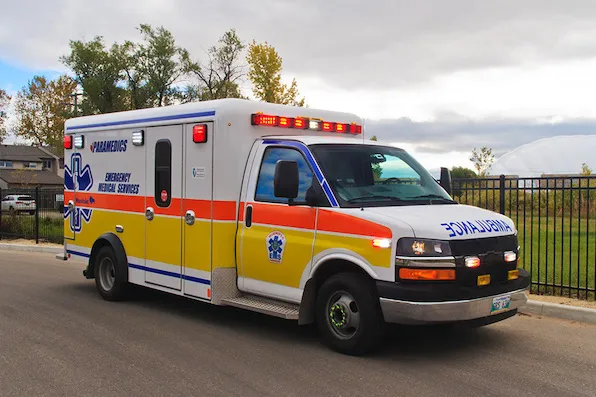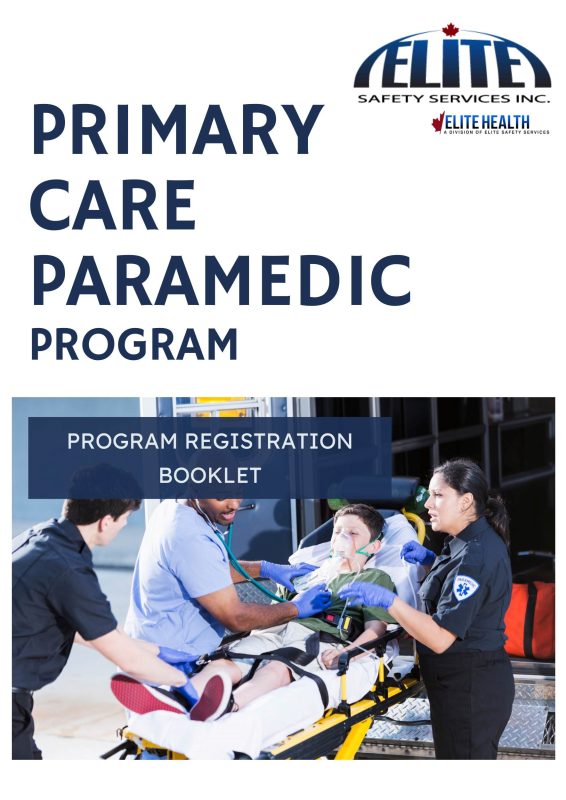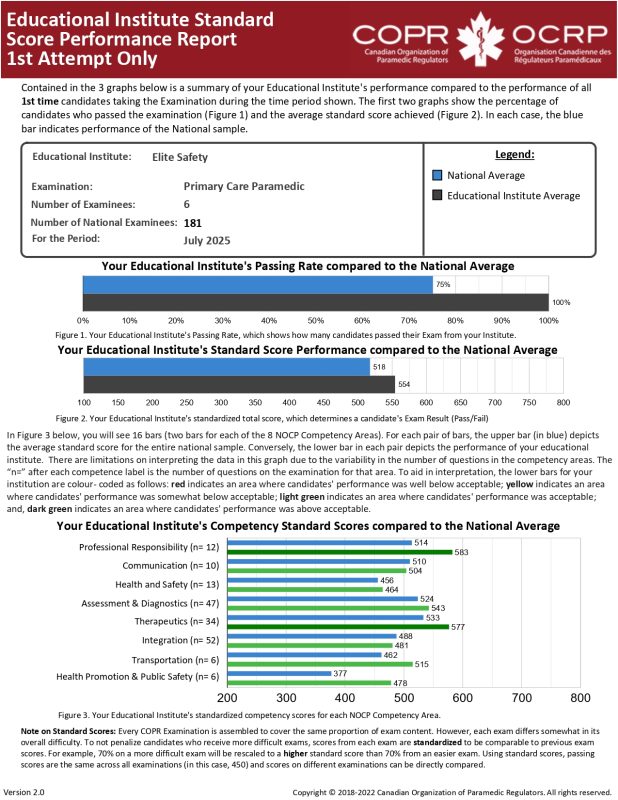Course
Primary Care Paramedic

2026 COURSE INTAKES NOW OPEN (Full Time, In-Class):
Full Time Program - August 4, 2026 - June 5, 2027
contact: training@elitesafetyservices.ca for more information, or to register!
What is a Primary Care Paramedic?
Primary Care Paramedics (PCPs) are medical professionals that work in a pre-hospital setting. In addition to basic medical care, PCPs are able to administer a variety of medications, initiate IV’s, provide airway management, and perform some medical procedures. A paramedic may be called to any number of situations where a person has become sick or injured. PCPs can work in many settings such as Ground Emergency Response Services, Clinical Settings, Industrial Settings, Community Outreach, or even Aeromedical Transport. Regardless of the setting, people that call for Paramedics to help them often have their lives depend on the quick decisions, knowledge, and skills of the PCP. The work of a paramedic can be both physically strenuous and emotionally stressful.
There are four different levels of Paramedics recognized nationally & five recognized in the Province of Manitoba
- Emergency Medical Responders (EMR)
- Primary Care Paramedics (PCP)
- Intermediate Care Paramedics (PCP-IC or ICP) *MB Specific; Additional Training Required*
- Advanced Care Paramedics (ACP)
- Critical Care Paramedics (CCP)
All levels can perform basic diagnostic testing such as blood pressure, pulse oximetry, glucometry, as well as administer medications. The higher the training level, the more advanced assessments, diagnostics tests, treatments, and medications are available to them. Manitoba’s ICP designation allows enhanced medication administration responsibilities and additional training to perform more advanced procedures.
What does a Paramedic do?
While on shift, PCP’s typically:
- Check the ambulance and all equipment to make sure it is safe and ready to respond with.
- Respond to emergency calls for help for any number of medical problems or trauma.
- Assess a patient’s condition and decide on a treatment plan, partially based off care plans and standing orders.
- Get patients out of a variety of locations and environments to the ambulance where they can be transported.
- Perform care for the patient in the back of the ambulance while the ambulance is being driven to the hospital.
- Transfer the patient to the emergency department of a healthcare facility and report on their assessment and treatment to the facility staff.
- Document all aspects of their interactions and assessment on a Patient Care Report, which becomes a permanent part of the patient’s record.
- Clean and disinfect the ambulance as well as replace all equipment that was used.
- Provide emotional support to patients suffering from a mental health crisis.
Aside from a regular emergency response call, paramedics also frequently transport patients between health care facilities. Patients may need to be taken from one hospital to the next for additional tests or access to specialists that are not available at the sending hospital. They can also be taken back to a hospital closer to their home to recover after a procedure or for end-of-life care with terminal medical conditions. Paramedics participate in injury prevention programs, community paramedicine programs, and public education events. All of these involve going into the community and interacting with the public to improve their overall health and well-being.
What is the workplace of a Paramedic like?
Paramedics work both outdoors and indoors in all weather conditions. They work in urban and rural settings and respond to calls in every conceivable environment. One call may be for a patient with a heart condition while the next may be to an industrial accident; no two responses are the same.
A paramedic’s typical workplace is the ambulance, they take their office with them whenever they are called to help someone. They normally work in teams of two but will frequently need the help of other paramedics with more advanced training, specially trained response teams, air ambulances, and other agencies such as police and fire departments. Paramedics must be able to work with all the other responders and coordinate their actions closely during stressful situations.
Paramedics have a physically demanding job that involves a lot of bending, lifting, and kneeling. The physical aspect of the job is repetitive with frequent lifting and lowering of patients on stretchers as well as repeatedly getting into and out of the ambulance. Some of the lifting and moving involves awkward postures, repetitive force, or overexertion. There is little to no time for stretching or any kind of preparation before needing to be able to lift and move a patient, good physical health is important.
What are some Health and Safety issues for Paramedics?
Paramedics have a dangerous job; the exact risks vary depending on the specific response. Completion of training, following policies and procedures, and staying up to date on Continuing Education will help mitigate these risks.
Potential Hazards include but are not limited to:
- Communicable diseases
- Injury from sharp medical instruments such as needles
- Exposure to hazardous materials and chemicals
- Back injuries or musculoskeletal disorders from lifting and moving patients and equipment
- Exposure to extreme weather conditions and temperatures
- Risk of injury from various work environments (Ex: working on the side of a highway, fires, unstable structures, large crowds, violent situations, and more)
- Motor vehicle incidents involving the ambulance
- Shift work and unpredictable shift end times resulting in fatigue
- Intense psychological stress and trauma
- Violence and harassment when dealing with hostile patients and bystanders
Should I become a Paramedic?
A career as a paramedic can be intensely rewarding while at the same time extremely stressful. It is important to be quick thinking, compassionate, driven, and enjoy problem solving. Emergency responses often involve walking into the worst moment of someone's life and a paramedic’s actions can make the difference between life and death. This is not the career for someone who wants to stand back and watch, or simply drive by.
What does it take to become a Paramedic?
Elite Safety Services offers training at both the EMR and PCP levels.
Training to become a Primary Care Paramedic builds on the EMR program with the addition of a more advanced understanding of the conditions they treat, more advanced diagnostic testing, how to obtain and interpret an Electrocardiogram (ECG), establishing intravenous infusions, advanced airway management and advanced medication administration. The course is over 1000 hours in length and involves a significant amount of time in an ambulance practicing your skills with a field preceptor.
Upon conclusion of formal training, PCPs need to write the COPR Entry to Practice Examination. Once the exam is passed; a Certificate of Practice with the College of Paramedics of Manitoba may be obtained.
Why Do We Continue to Uphold High Entrance Standards?
As an organization, we made a conscious decision to maintain our high entrance requirements and academic standards—even after it was no longer mandatory to do so. This decision was not made lightly. Understandably, some may wonder: Why keep the bar so high? Doesn’t this create additional challenges for applicants and program planning?
It's easy to uphold high standards in times of stability. But during periods of uncertainty or pressure—such as workforce shortages—there can be a strong temptation to ease those standards in hopes of a quick fix. However, when high standards are seen as negotiable, they often lose their value and permanence.
We believe that consistently maintaining high standards builds a culture of excellence. It encourages continuous growth, attracts high-calibre students, and ultimately results in better outcomes—for learners, for patients, and for the healthcare system as a whole. Our goal is to attract future paramedics who are committed to being the best at what they do and are motivated to provide the highest quality of care to their communities.
We also recognize that the expectations of the profession itself have evolved. The Pan-Canadian Essential Regulatory Requirements, developed by the Canadian Organization of Paramedic Regulators, outline a new national benchmark for paramedic knowledge and competence. These requirements form the foundation for the national entry-to-practice exam and define what is necessary to succeed in this career.
Yes, Manitoba is currently experiencing a paramedic shortage, and it is crucial that we train and support new professionals entering the field. However, simply filling seats is not the answer. We must continue to invest in preparing students who are not only capable of meeting the demands of training and testing but who will also excel in delivering safe, compassionate, and effective care to Manitobans.
By upholding our standards, we are investing in the long-term strength and integrity of our profession—and in the health and safety of the communities we serve.
Interested?
If the career of a PCP sounds like the right fit for you, please contact us with any questions or to begin your registration process. Our Registration Booklet is available below.
Interested in the EMR program instead? CLICK HERE
Resources:
For more information on costs and requirements of maintaining EMR/PCP certificates, as well as general information, please visit the following resources.
College of Paramedics of Manitoba https://collegeparamb.ca/
Paramedic Association of Manitoba https://www.paramedicsofmanitoba.ca/
Canadian Organization of Paramedic Regulators (COPR) https://copr.ca/
Download your PCP Registration Booklet HERE
Audience: Professionals in emergency medical care who may be responsible for initial assessments, the provision of safe and prudent care, and the transport of a patient to the most appropriate healthcare facility
Pre-requisite(s): See Registration Package for Requirements
Course Length: 1504.5 Hours (1052.5 Theory Hours, 452 Practicum & Clinical Hours)
Upcoming Courses
No upcoming dates are scheduled for this course.


